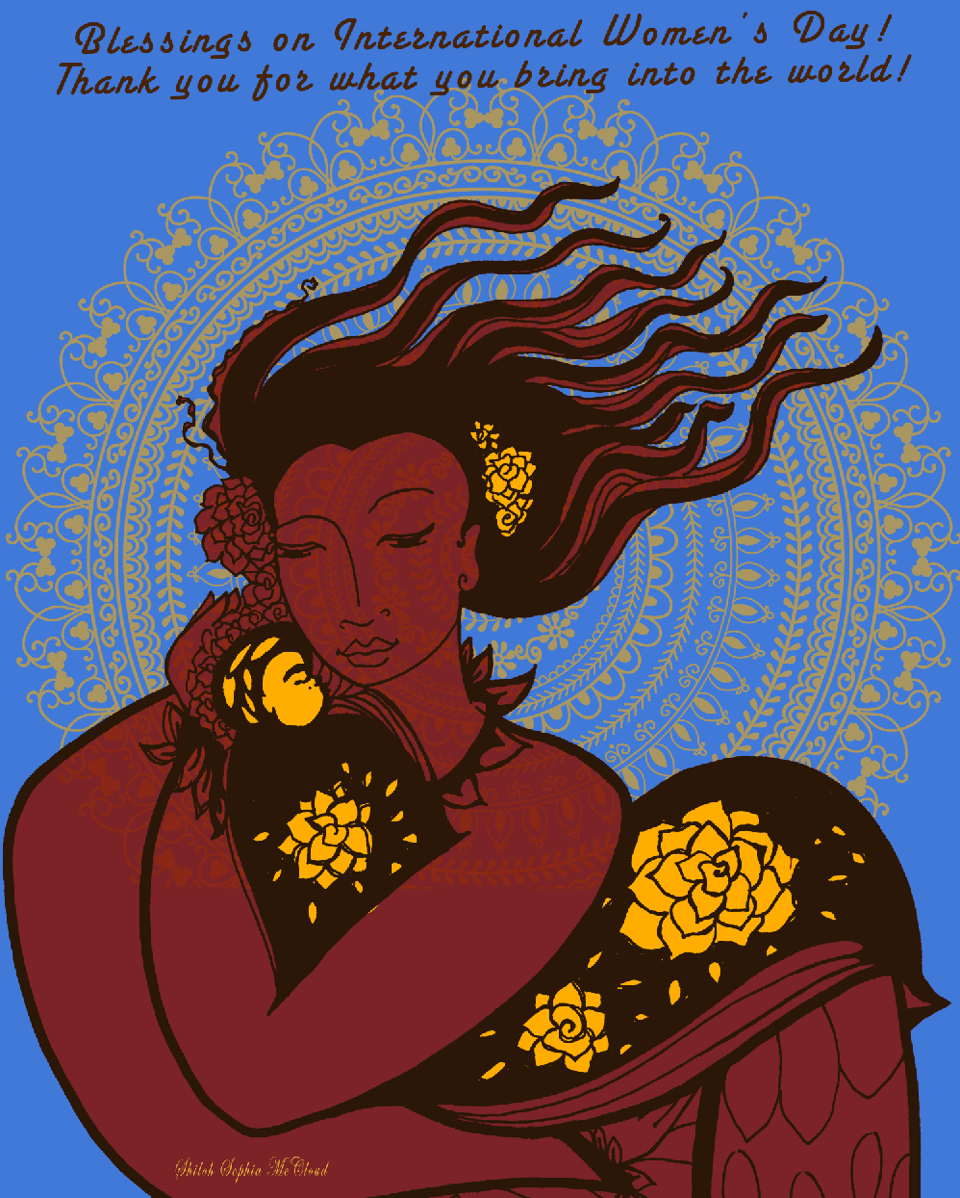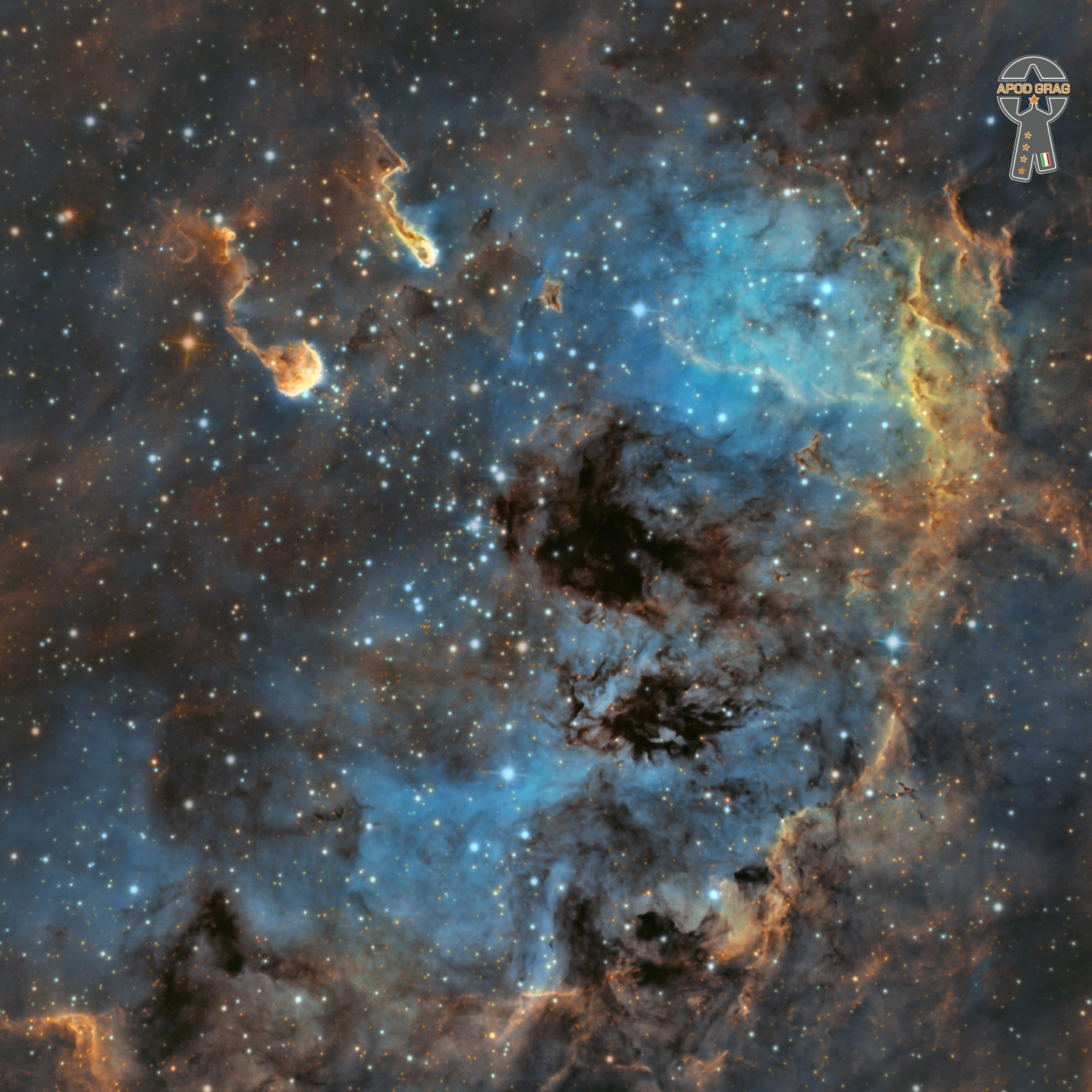FREE UKRAINE
see full post...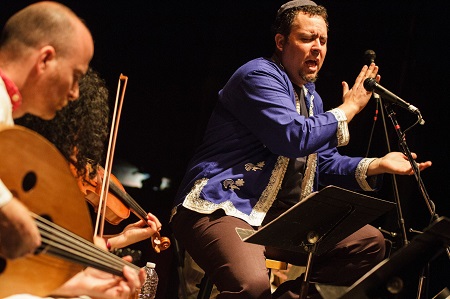

The Rosette Nebula (also known as Caldwell 49) is an H II region located near one end of a giant molecular cloud in the Monoceros region of the Milky Way Galaxy. The open cluster NGC 2244 (Caldwell 50) is closely associated with the nebulosity, the stars of the cluster having been formedfrom the nebula’s matter.
The complex has the following New General Catalogue (NGC) designations:
- NGC 2237 – Part of the nebulous region (Also used to denote whole nebula)
- NGC 2238 – Part of the nebulous region
- NGC 2239 – Part of the nebulous region (Discovered by John Herschel)
- NGC 2244 – The open cluster within the nebula (Discovered by John Flamsteed in 1690)
- NGC 2246 – Part of the nebulous region
The cluster and nebula lie at a distance of 5,000 light-years from Earth and measure roughly 130 light years in diameter. The radiation from the young stars excites the atoms in the nebula, causing them to emit radiation themselves producing the emission nebula we see. The mass of the nebula is estimated to be around 10,000 solar masses.
A survey of the nebula with the Chandra X-ray Observatory has revealed the presence of numerous new-born stars inside optical Rosette Nebula and studded within a dense molecular cloud. Altogether, approximately 2500 young stars lie in this star-forming complex, including the massive O-type stars HD 46223 and HD 46150, which are primarily responsible for blowing the ionized bubble. Most of the ongoing star-formation activity is occurring in the dense molecular cloud to the south east of the bubble.
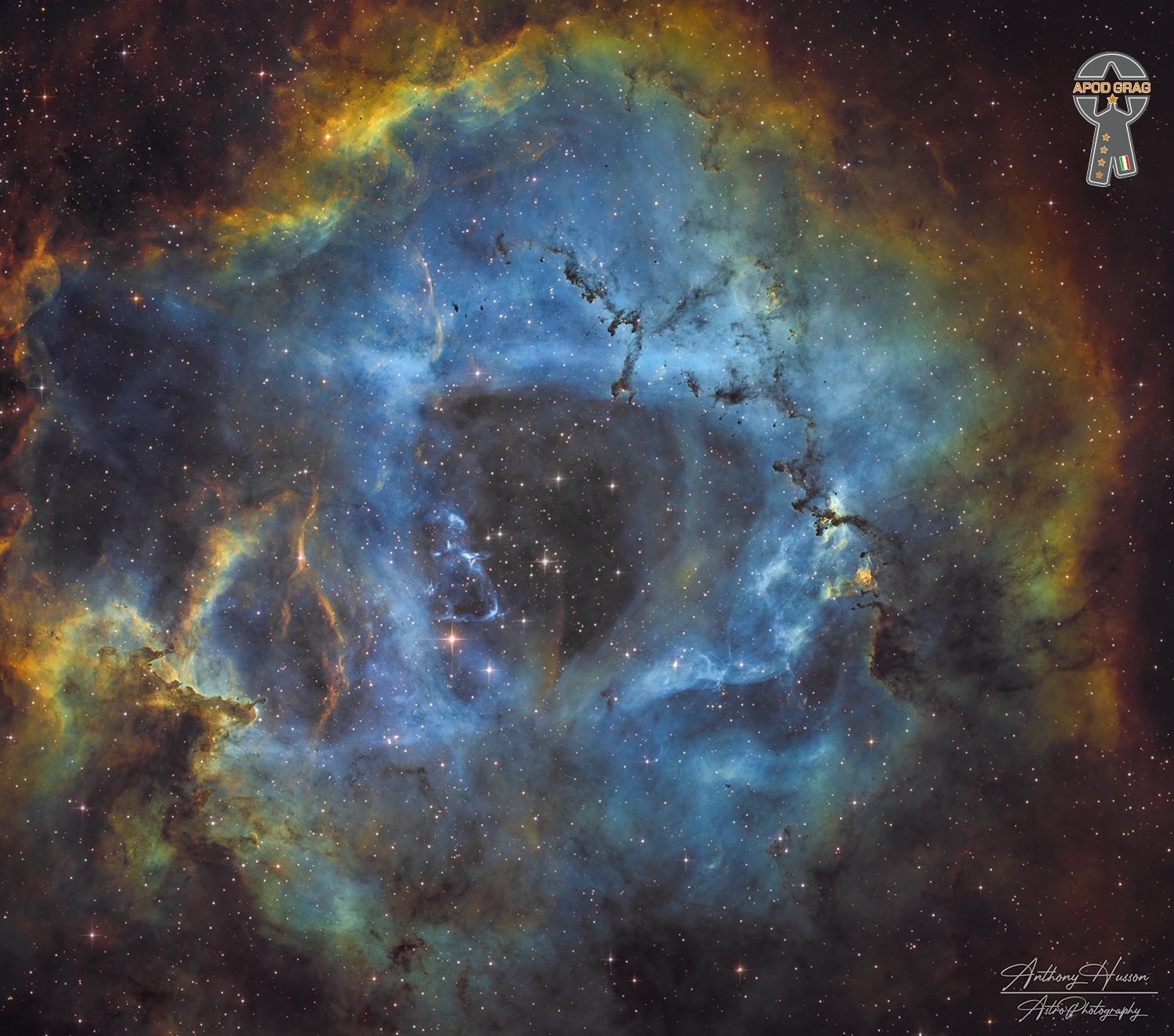
Ronnie Earl (born Ronald Horvath, March 10, 1953, Queens, New York, United States) is an American blues guitarist and music instructor.
Earl collected blues, jazz, rock and soul records while growing up. He studied American History at C.W. Post College on Long Island for a year and a half, then moved to Boston to pursue a Bachelor’s Degree in Special Education and Education at Boston University where he would graduate in 1975. He spent a short time teaching handicapped children. During his college years, he attended a Muddy Waters concert at the Jazz Workshop in Boston. After seeing Waters perform, Earl took a serious interest in the guitar, which he had first picked up in 1973. His first job was as a rhythm guitarist at The Speakeasy, a blues club in Cambridge, Massachusetts. In addition to playing in the Boston blues scene, Earl traveled twice by Greyhound Bus to Chicago, where he was introduced to the Chicago blues scene by Koko Taylor.
Later he traveled to New Orleans and Austin, Texas, where he spent time with Kim Wilson, Jimmie Vaughan and The Fabulous Thunderbirds. In 1979, he joined the band Roomful of Blues as lead guitarist.
see full post...
Norman Blake (born March 10, 1938) is a traditional American stringed instrument artist and songwriter.
Blake was born in Chattanooga, Tennessee, and grew up in Sulphur Springs, Alabama. He listened to old-time and country music on the radio by the Carter Family, the Skillet Lickers, Roy Acuff, and the Monroe Brothers (Charlie and Bill Monroe). He learned guitar at age 11 or 12, then mandolin, dobro, and fiddle in his teens. When he was 16, he dropped out of school to play music professionally.
In the 1950s, Blake joined the Dixieland Drifters and performed on radio broadcasts, then joined the Lonesome Travelers. When he was drafted in 1961, he served as an Army radio operator in the Panama Canal Zone. He started a popular band known as the Kobbe Mountaineers. A year later, while he was on leave, he recorded the album Twelve Shades of Bluegrass with the Lonesome Travelers.
https://www.youtube.com/watch?v=chGUHMAoMV8
see full post...Kenneth Charles “Jethro” Burns (March 10, 1920 – February 4, 1989) was an American mandolinist and one-half of the comedy duo Homer and Jethro with Henry D. “Homer” Haynes.
Burns was born in Conasauga, Tennessee on March 10, 1920. His family moved to Knoxville, Tennessee when he was three. In 1936, he auditioned for a talent contest at Knoxville radio station WNOX where he met Henry Haynes, also 16. The two formed a duo and WNOX program director Lowell Blanchard gave them the stage names Homer and Jethro after forgetting their names on the air.
Burns was drafted into the US Army and served in Europe during World War II and reunited with Haynes, who had served in the Pacific, in Knoxville in 1945. By 1947, the duo moved to Cincinnati, Ohio and were working at WLW on the station’s Midwestern Hayride. They signed with King Records, where they worked as a house band and recorded singles on their own, and two years later signed with RCA Records. The pair were fired along with other stars by new management at WLW in 1948, and after a brief tour, they moved to Springfield, Missouri and performed on KWTO with Chet Atkins, the Carter Family and Slim Wilson.
https://www.youtube.com/watch?v=wA8SlkSe_hM
see full post...Leon Bismark “Bix” Beiderbecke (March 10, 1903 – August 6, 1931 Davenport, IA) was an American jazz cornetist, pianist and composer.
Beiderbecke was one of the most influential jazz soloists of the 1920s, a cornet player noted for an inventive lyrical approach and purity of tone, with such clarity of sound that one contemporary famously described it like “shooting bullets at a bell. His solos on seminal recordings such as “Singin’ the Blues” and “I’m Coming, Virginia” (both 1927) demonstrate a gift for extended improvisation that heralded the jazz ballad style, in which jazz solos are an integral part of the composition. Moreover, his use of extended chords and an ability to improvise freely along harmonic as well as melodic lines are echoed in post-WWII developments in jazz. “In a Mist” (1927) is the best known of Beiderbecke’s published piano compositions and the only one that he recorded. His piano style reflects both jazz and classical (mainly impressionist) influences. All five of his piano compositions were published by Robbins Music during his lifetime.
A native of Davenport, Iowa, Beiderbecke taught himself to play the cornet largely by ear, leading him to adopt a non-standard fingering technique that informed his unique style. He first recorded with Midwestern jazz ensemble The Wolverines in 1924, after which he played briefly for the Detroit-based Jean Goldkette Orchestra before joining Frankie “Tram” Trumbauer for an extended engagement at the Arcadia Ballroom in St. Louis, also under the auspices of Goldkette’s organisation. Beiderbecke and Trumbauer joined Goldkette’s main band at the Graystone Ballroom in Detroit in 1926. The band toured widely and famously played a set opposite Fletcher Henderson at the Roseland Ballroom in New York City in October 1926. He made his greatest recordings in 1927. The Goldkette band folded in September 1927 and, after briefly joining bass saxophone player Adrian Rollini‘s band in New York, Trumbauer and Beiderbecke joined America’s most popular dance band: Paul Whiteman and his Orchestra.
Beiderbecke’s most influential recordings date from his time with Goldkette and Whiteman, although he also recorded under his own name and that of Trumbauer’s. The Whiteman period marked a precipitous decline in his health due to his increasing use of alcohol. Treatment for alcoholism in rehabilitation centers, with the support of Whiteman and the Beiderbecke family, failed to stop his decline. He left the Whiteman band in 1929 and in the summer of 1931 died aged 28 in his Sunnyside, Queens, New York apartment. Beiderbecke died in his apartment, No. 1G, 43–30 46th Street, in Sunnyside, Queens, New York, on August 6, 1931. The week had been stiflingly hot, making sleep difficult. Suffering from insomnia, Beiderbecke played the piano late into the evenings, to both the annoyance and the delight of his neighbors. The official cause of death, as indicated on the death certificate, was lobar pneumonia. Unofficially, edema of the brain, coupled with the effects of long-term alcoholism, have been cited as contributory factors.
see full post...FREE UKRAINE
see full post...A deep exposure shows the famous dark indentation that looks like a horse’s head, visible just left and below center, and known unsurprisingly as the Horsehead Nebula. The Horsehead Nebula (Barnard 33) is part of a vast complex of dark absorbing dust and bright glowing gas. To bring out details of the Horsehead’s pasture, an astrophotographer artistically combined light accumulated for over 20 hours in hydrogen (orange), oxygen (blue), and sulfur (green). The resulting spectacular picture captured from Raachine, Lebanon, details an intricate tapestry of gaseous wisps and dust-laden filaments that were created and sculpted over eons by stellar winds and ancient supernovas. The featured composition brings up another pareidolic animal icon — that of a lion’s head — in the expansive orange colored gas above the horse’s head. The Flame Nebulais visible just to the left of the Horsehead. The Horsehead Nebula lies 1,500 light years distant towards the constellation of Orion.
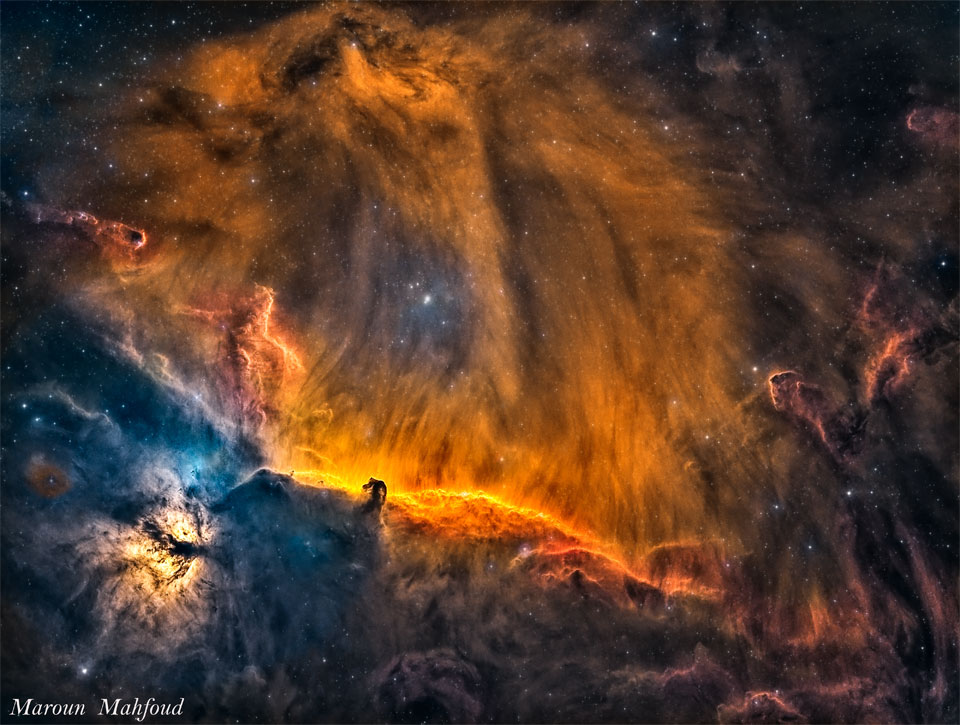
March 9th 1979 Jeanette Harris was born and raised in California’s post-Gold Rush town of Fresno in the center of the San Joaquin Valley. Reared by her mother, Annette, and her church organist father, Floyd Harris – both of deep spiritual faith and intense believers in the art of music – Jeanette and her older brother, Michael, received their love of God and family genetically.
“When I was 5, my father put a guitar in my hands,” Jeanette begins. “A year later, he switched me to piano with a private teacher. I didn’t like it. Reading treble and bass clefs was so overwhelming that I would cry, but it gave me a great jumpstart. One day while driving me to 4th grade, Mom was playing a cassette by Grover Washington, Jr. I remember looking at the picture of his alto sax. It was beautiful and Grover made it look so hip. I felt it would be the perfect instrument for me.”
Jeanette played saxophone and piano from grade school to high school where band teacher Steve Alcala also had her play in the Fresno City College jazz band even before she graduated high school. She won numerous awards and accolades, which led to a scholarship to attend Berklee in Boston where she earned a Bachelor of Arts degree in Music Performance.
Back in Fresno, Jeanette recorded her first self-released CD, Here and There, grabbing brother Michael to play drums with Patrick Olvera on bass, and began building a following by regularly packing Mike’s Pub & Pizzeria. She recorded her official debut album Reflections followed by Smooth Holiday Greetings on her family’s J&M Records (Jeanette & Michael’s initials, Mom and Dad’s funds).
Citing her influences, Jeanette continues, “(Saxophonist) Richard Elliot brought some serious R&B groove at a time when smooth jazz really needed more of that funk vibe, especially his song ‘Corner Pocket.’ I just loved his production! As a composer, Stevie Wonder’s music touches the hearts of people with lyrics that have strong meanings, and beautiful chords and melodies. And (guitarist) Norman Brown is the one that inspired me to want to be a performer when my parents took me to see him for my very first concert at The Bastille in Hanford, CA. He gave me chills!” After crossing paths with Brown on the road, Jeanette co-wrote a song with him that became the title track of her fourth CD, Saxified. Brown recorded the song on his Grammy nominated CD, 24/7, with a different title, “The Best is Yet to Come” featuring Gerald Albright. “To have Gerald playing a melody that I wrote is so amazing,” Jeanette shares.
Jeanette has played major events from The Coombs River Bend Ranch Festival to festivals in Japan and London. She has performed as a side musician with Howard Hewett and Deniece Williams and has opened shows for greats ranging from smooth jazz stars Kirk Whalum, Najee and The Rippingtons to R&B stars Babyface, Phil Perry and KEM. “I got a standing ovation opening for KEM,” Jeanette beams. “He came out to meet me and get my CD. His people said he never does that! That let me know my music does crossover.”
see full post...Ustad Zakir Hussain (born 9 March 1951) is an Indian tabla virtuoso, composer, percussionist, music producer and film actor. He is the eldest son of tabla player Ustad Allah Rakha.
He was awarded the Padma Shri in 1988, and the Padma Bhushan in 2002, by the Government of India presented by President Abdul Kalam. He was also awarded the Sangeet Natak Akademi Award in 1990, given by the Sangeet Natak Academy, India’s National Academy of Music, Dance and Drama. In 1999, he was awarded the United States National Endowment for the Arts‘ National Heritage Fellowship, the highest award given to traditional artists and musicians. Zakir Hussain was born on 9 March 1951 in Mahim (a suburb of Mumbai) in a Punjabi Dogra family. Hussain was born to tabla maestro Ustad Alla Rakha. His mother’s name was Bavi Begum. Although their family name is Qureshi, Zakir was given the surname Hussain. He attended St. Michael’s High School in Mahim, and briefly attended St. Xavier’s College, Mumbai. Hussain was a child prodigy. His father taught him Pakhawaj from the age of 3 years. His father would wake him up at 3 a.m. and would teach him vocally by reciting different rhythms till 6 a.m. Zakir’s father Alla Rakha belonged to the Punjab gharana tradition of tabla-playing.
see full post...Randolph Denard Ornette Coleman (March 9, 1930 – June 11, 2015) was an American jazz saxophonist, violinist, trumpeter, and composer known as a principal founder of the free jazz genre, a term derived from his 1960 album Free Jazz: A Collective Improvisation. His pioneering performances often abandoned the chordal and harmony-based structure found in bebop, instead emphasizing a jarring and avant-garde approach to improvisation.
Born in Fort Worth, Texas, Coleman began his musical career playing in local R&B and bebop groups, and eventually formed his own group in Los Angeles featuring members such as Ed Blackwell, Don Cherry, Charlie Haden, and Billy Higgins. In 1959, he released the controversial album The Shape of Jazz to Come and began a long residency at the Five Spot jazz club in New York City. His 1960 album Free Jazz would profoundly influence the direction of jazz in that decade. Beginning in the mid-1970s, Coleman formed the group Prime Time and explored funk and his concept of Harmolodic music.
Coleman’s “Broadway Blues” and “Lonely Woman” became genre standards and are cited as important early works in free jazz. His album Sound Grammar received the 2007 Pulitzer Prize for Music. AllMusic called him “one of the most important (and controversial) innovators of the jazz avant-garde“.
see full post...Samuel Osmond Barber II (March 9, 1910 – January 23, 1981 Westchester, PA) was an American composer, pianist, conductor, baritone, and music educator, and one of the most celebrated composers of the 20th century. The music critic Donal Henahan stated, “Probably no other American composer has ever enjoyed such early, such persistent and such long-lasting acclaim.”[1] Principally influenced by nine years of composition studies with Rosario Scalero at the Curtis Institute and more than twenty-five years of study with his uncle, the composer Sidney Homer, Barber’s music usually eschewed the experimental trends of musical modernism in favor of utilizing traditional 19th-century harmonic language and formal structure that embraced lyricism and emotional expression. However, elements of modernism were adopted by Barber after 1940 in a limited number of his compositions, such as an increased use of dissonance and chromaticism in the Cello Concerto (1945) and Medea’s Dance of Vengeance (1955), and the use of tonal ambiguity and a narrow use of serialism in his Piano Sonata (1949), Prayers of Kierkegaard (1954), and Nocturne (1959).
Barber was adept at writing both instrumental and vocal music. His works became successful on the international stage and many of his compositions enjoyed rapid adoption into the classical performance canon. In particular, his Adagio for Strings (1936) has earned a permanent place in the concert repertory of orchestras, as has that work’s adaptation for chorus, Agnus Dei (1967). He was awarded the Pulitzer Prize for Music twice: for his opera Vanessa (1956–57) and for the Concerto for Piano and Orchestra (1962). Also widely performed is his Knoxville: Summer of 1915 (1947), a setting for soprano and orchestra of a prose text by James Agee. At the time of Barber’s death, nearly all of his compositions had been recorded.[1] Many of his compositions were commissioned or first performed by such noted organizations and artists as the Boston Symphony Orchestra, the Philadelphia Orchestra, the New York Philharmonic, the Metropolitan Opera, Vladimir Horowitz, Eleanor Steber, Raya Garbousova, John Browning, Leontyne Price, Pierre Bernac, Francis Poulenc, and Dietrich Fischer-Dieskau.[1]
While Barber composed a significant body of purely instrumental music, two-thirds of his compositional output was dedicated to writing art songs for voice and piano, choral music, and songs for voice and orchestra. Some of his most frequently performed songs include both the solo voice and choral versions of Sure on this shining night (solo version from 1938 and choral version from 1961) with text by Agee and the song cycle Hermit Songs (1953) with anonymous texts by Irish monks from eighth through the thirteenth centuries. This emphasis on sung material was rooted in his own brief career as a professional baritone in his 20s which inspired a life long love of composing vocal music. Barber recorded his own setting of Arnold‘s “Dover Beach” accompanying his own singing voice on the piano in 1935 for NBC, and was also featured weekly on NBC Radio in 1935–1936 in performance of German lieder and art songs. He also occasionally served as conductor for performances and recordings of his works with symphony orchestras during the 1950s and had a brief career teaching composition at the Curtis Institute from 1939–1942.
Barber was in a relationship with the composer Gian Carlo Menotti for more than 40 years. The two men lived at Capricorn, a house just north of New York City, where they frequently hosted parties with academic and music luminaries. Menotti served as Barber’s librettist for two of his three operas. After the relationship ended in 1970, the two men remained close friends until Barber’s death from cancer in 1981.
see full post...Juan de Dios Ventura Soriano (8 March 1940 – 28 July 2021), better known as Johnny Ventura nicknamed El Caballo Mayor, was a Dominican singer and band leader of merengue and salsa. The merengue legend was a legislator of the Lower House between 1982 and 1986. He also served as vicemayor of Santo Domingo from 1994 to 1998, and as mayor of Santo Domingo from 1998 to 2002.
He began his career as a singer when he presented himself with some friends in a program of devotees which was broadcast by La Voz de la Alegríaweekly. The young Ventura, only 16 years of age, obtained first place of the participants. A little later, he started appearing in the programs of devotees which were sponsored by La Voz Dominicana. When Ventura Soriano appeared for the first time in the TV show: La TV busca una estrella, that was broadcast Friday night at seven, they rang the bell. In the following week, like a champion, Juan de Dios returned to be welcomed in the same competition. He practiced, worked and was crowned for the hit. Then he won first prize. Thereupon he won a lot of prizes in the devotees programs, until he was finally rewarded with the much desired scholarship which the broadcasting company, property of José Arismendy Trujillo Molina, gave for young talents. With La Voz Dominicana Juan de Dios studied music, vocal techniques and expression. This made Ventura one of the most famous singers in Latin America.
see full post...